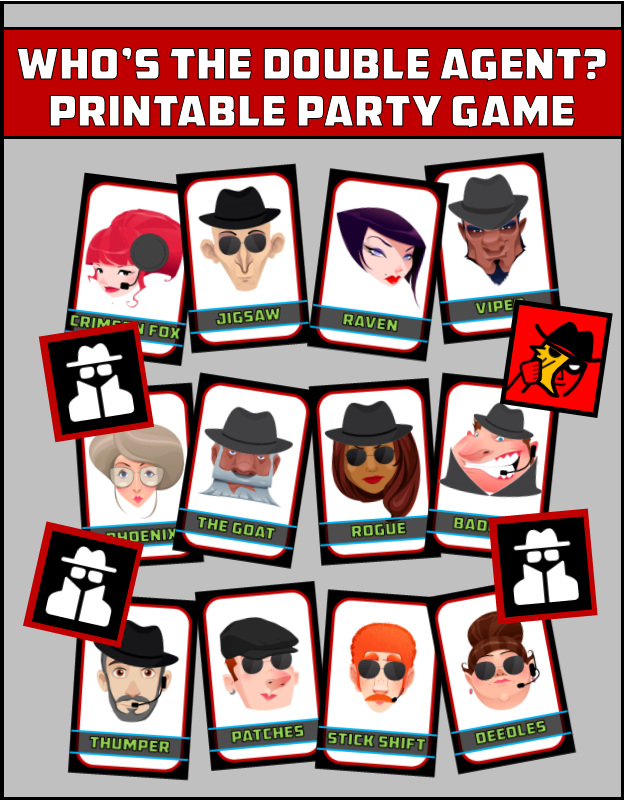

When a codename card is pointed out, the spymaster covers that card with an appropriate identity card – a blue agent, a red agent, an innocent bystander, or the assassin – as indicated on the spymasters' map of the grid. For a faster game, or if the opposing team is taking too long to think for example, a timer, such as the hourglass included with the game packaging, may be used.Īfter a spymaster gives the hint with its word and number, their field operatives make guesses about which codename cards bear words related to the hint and point them out, one at a time. If their first guess is right, the field operatives may continue to make guesses until they reach the guess limit or make a wrong guess, or they can choose to end their turn voluntarily. The field operatives must make at least one guess per turn, risking a wrong guess and its consequences.
#SPY PARTY GAME NAMES PLUS#
It also determines the maximum number of guesses the field operatives may make on that turn, which is the hint's number plus one. The hint's number tells the field operatives how many words in the grid are related to the word of the clue. If the spymaster of a team gives an invalid clue, their turn ends immediately and, as a penalty, the opposing team's spymaster randomly covers a codename belonging to one of their agents before the start of their turn. Codename cards are covered as guesses, correct or otherwise, are made. The hint's word can be chosen freely, as long as it is not (and does not contain, nor is contained in) any of the words on the codename cards still visible at the time. The spymaster gives a hint that is related to as many of the words on their own agents' cards as possible, but not to any others – lest the words accidentally lead their team to choose a card representing an innocent bystander, an opposing agent, or the assassin. Each hint may only consist of one single word and a number. On each turn, the appropriate spymaster gives a verbal hint about the words on the respective cards. The 'lights' on the edges of the key card indicate which team plays first and has to find nine agents of their own (the other team only has to find eight). The key card can be rotated at the spymasters' will before being put into a stand. The teams' spymasters are given a randomly-dealt key card showing a 5×5 grid of 25 squares of various colors, each corresponding to one of the codename cards on the table. A number of these words represent red agents, a number represent blue agents, one represents an assassin, and the others represent innocent bystanders. Twenty-five codename cards, each bearing a word, are laid out in a 5×5 grid in random order. One player of each team is selected as the team's spymaster the others are field operatives. Players split into two teams: red and blue.

Codenames is a game of guessing which codenames (i.e., words) in a set are related to a hint-word given by another player.


 0 kommentar(er)
0 kommentar(er)
